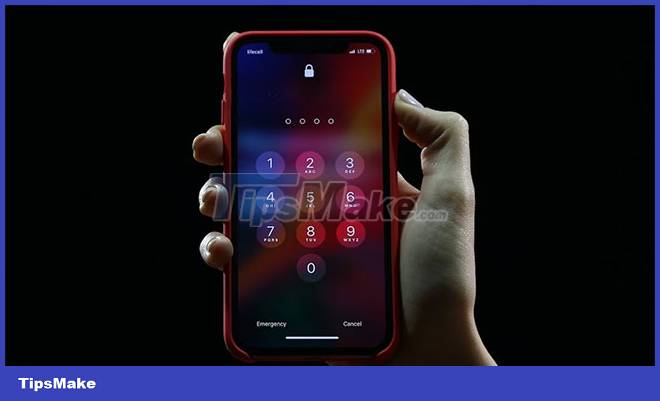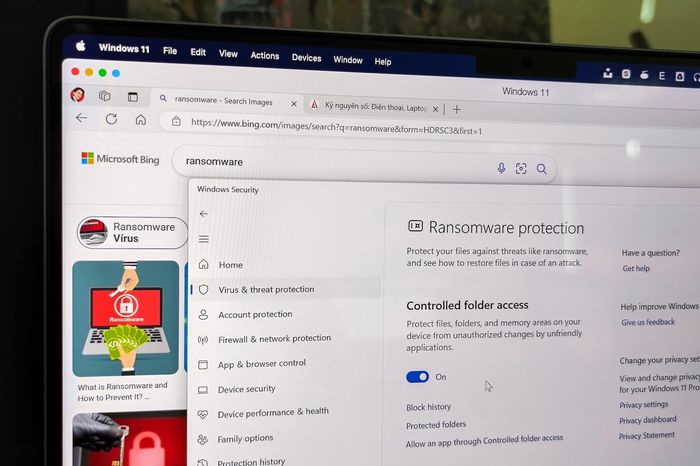What is Fargo Ransomware? How to avoid?
Fargo, formerly known as Mallox, is becoming popular and dangerous. Here's what this ransomware does and how to avoid it.
What is Fargo Ransomware?
A Fargo attack aims to access your important data, encrypt it and demand a ransom to transfer the data and not publish it online. But how does Fargo ransomware work exactly?
Bad guys love to use phishing schemes, but they can use brute force if they find a particularly vulnerable and lucrative system, which can lead to anything from trying multiple ciphers. password to bypass poorly updated firewalls.

The purpose of these strategies is to infect your device with viruses. It will then attempt to bypass security measures and lock the data so that only an attacker can unlock it. A ransom note is left for the target, detailing how to pay their attackers.
At this stage, there are ways to negotiate with ransomware hackers and minimize damage, but you can avoid this hassle entirely with good network security that protects against such threats.
How to avoid attacks from Fargo ransomware ransomware
Note the key cybersecurity statistics, such as the fact that thousands of ransomware cases occurred in 2021 alone, with losses amounting to $16.8 million and more than half of all ransomware cases. The victims all over the world are in the United States. The success rate of phishing scams is also worrying.
However, instead of being scared, use this knowledge to build defenses against these or any other form of cyberattack. After all, the steps you'll take to protect yourself - and your company, if any - are almost exactly the same.
Here's how to stop Fargo ransomware threats:
1. Keep backups (then pulled from your main system) of important data so you don't have to worry about hackers stealing it.
2. Use an external storage system - hard drive or USB - for some or all of your files, which you can disconnect when you don't need them.
3. Create strong passwords and change them often, especially for your online accounts.
4. Invest in good antivirus software with protection against ransomware, such as features that detect malicious links in emails and block access to dangerous websites.
5. Don't ignore updates to security programs because they patch vulnerabilities that hackers can exploit.
6. Continue learning about cybercriminal activities, including things like the most dangerous ransomware groups in the world and how scammers use fake Amazon emails.
7. Be wary of receiving emails, texts, and phone calls, especially if the contact asks you to download or visit a website.
8. If you run a business, train your employees in cybersecurity and maintain strong policies to prevent both external and internal threats.
Digging deep into cybercriminals and how they affect the world is tough, but not learning about things like the Fargo ransomware makes you more likely to fall at risk. Your chances of averting disaster are further increased if you apply expert security tips.
When you're faced with a ransomware attack, it's important to know how to react, so expand your research on who to contact and what not to do. Being prepared means you'll be able to solve problems smarter and faster.
You should read it
- 7 kinds of ransomware you didn't expect
- List of the 3 most dangerous and scary Ransomware viruses
- Ransomware can encrypt cloud data
- General guidelines for decoding ransomware
- What is Ransomware Task Force (RTF)?
- What is Ransomware Ryuk? How to prevent it?
- [Infographic] 7 effective ways to protect businesses from Ransomware
- What is BlackCat Ransomware? How to prevent?
- How to decode ransomware InsaneCrypt (Everbe 1.0)
- Why is Ransomware the perfect hack?
- Learn about Ransomware: 6 ransomware on computers
- Detecting two unusual versions of ransomware, shows that the world of ransomware has become diversified
May be interested

What is Ransomware Screen Locker? How to remove?

How to find and remove WMI Persistence malware from Windows PCs

If I don't use the Internet, do I need anti-virus software?

Should you choose free or paid antivirus software?

A safe way to test any Windows antivirus software's anti-malware capabilities

How to prevent RAT attacks and take control of PC






 7 kinds of ransomware you didn't expect
7 kinds of ransomware you didn't expect List of the 3 most dangerous and scary Ransomware viruses
List of the 3 most dangerous and scary Ransomware viruses QNAP advises users to disconnect NAS from internet to avoid DeadBolt ransomware ransomware
QNAP advises users to disconnect NAS from internet to avoid DeadBolt ransomware ransomware There is a tool to decrypt the ransomware that specializes in attacking businesses
There is a tool to decrypt the ransomware that specializes in attacking businesses How to enable ransomware restrictions on Windows
How to enable ransomware restrictions on Windows Ransomware can encrypt cloud data
Ransomware can encrypt cloud data